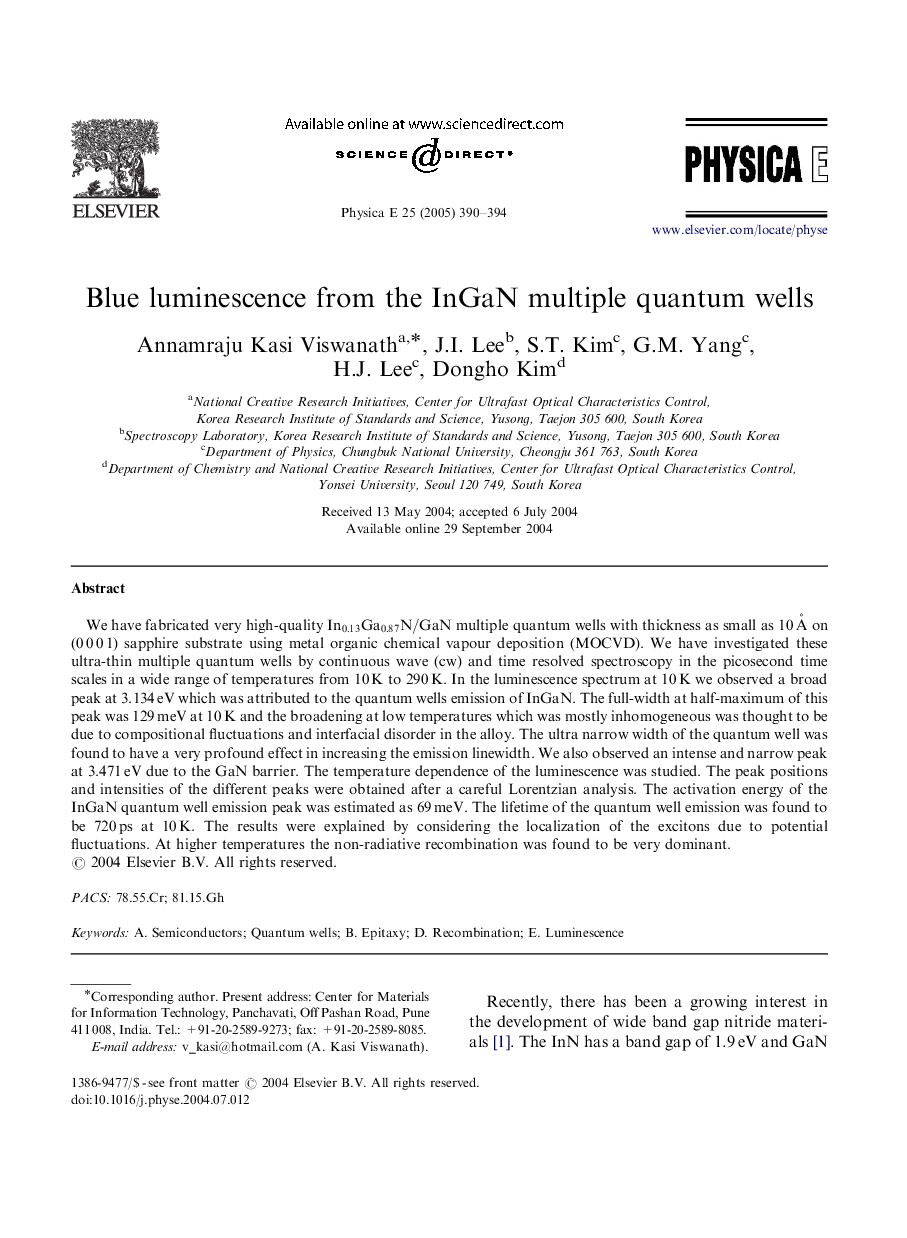| Article ID | Journal | Published Year | Pages | File Type |
|---|---|---|---|---|
| 10642335 | Physica E: Low-dimensional Systems and Nanostructures | 2005 | 5 Pages |
Abstract
We have fabricated very high-quality In0.13Ga0.87N/GaN multiple quantum wells with thickness as small as 10Ã
on (0Â 0Â 0Â 1) sapphire substrate using metal organic chemical vapour deposition (MOCVD). We have investigated these ultra-thin multiple quantum wells by continuous wave (cw) and time resolved spectroscopy in the picosecond time scales in a wide range of temperatures from 10Â K to 290Â K. In the luminescence spectrum at 10Â K we observed a broad peak at 3.134Â eV which was attributed to the quantum wells emission of InGaN. The full-width at half-maximum of this peak was 129Â meV at 10Â K and the broadening at low temperatures which was mostly inhomogeneous was thought to be due to compositional fluctuations and interfacial disorder in the alloy. The ultra narrow width of the quantum well was found to have a very profound effect in increasing the emission linewidth. We also observed an intense and narrow peak at 3.471Â eV due to the GaN barrier. The temperature dependence of the luminescence was studied. The peak positions and intensities of the different peaks were obtained after a careful Lorentzian analysis. The activation energy of the InGaN quantum well emission peak was estimated as 69Â meV. The lifetime of the quantum well emission was found to be 720Â ps at 10Â K. The results were explained by considering the localization of the excitons due to potential fluctuations. At higher temperatures the non-radiative recombination was found to be very dominant.
Related Topics
Physical Sciences and Engineering
Materials Science
Electronic, Optical and Magnetic Materials
Authors
Annamraju Kasi Viswanath, J.I. Lee, S.T. Kim, G.M. Yang, H.J. Lee, Dongho Kim,
